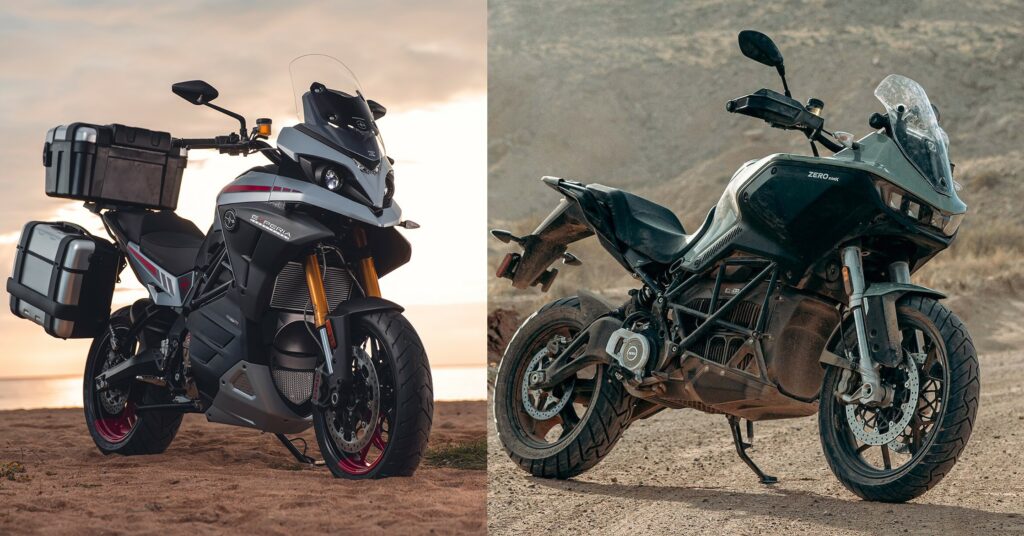
Zero Motorcycles just launched their new DSR/X that will compete directly with the Energica Experia.
Being a Zero SR/F owner and having tested the Energica Experia in July, I was waiting for this new bike to be on the market.
—
EDIT: After posting this review on Facebook in the “Energica Owners Group“, I quickly received 10s of comments, the most valuables coming from Rick Flashman. Then I also collected new feedback from Adi at e-performance and put those Edits below in the relevant sections.
BEFORE READING THIS ARTICLE consider these biases if you already own a Zero or an Energica:
- Confirmation bias : the tendency to search for, interpret, favor information in a way that confirms or supports one’s prior beliefs or values.
- Post-purchase rationalisation or Choice-supportive bias is the tendency to overlook any defects or faults after an expensive purchase in order to justify our decision.
These biases explain why many members of the Energica Group were in denial and rejected some points of this comparison. Some Energica owners rejected it as a whole, considering it was not in favour of Energica so it couldn’t be true.
I am not a journalist nor a youtube influencer invited to test the Experia or the DSR/X, I’m not affiliated to any brand and don’t make any money from my content (I have another job that I like very much), I don’t care if tomorrow I ride a Zero or an Energica, I just want an electric motorcycle that I like and that suits my needs.
My test ride of the Energica Experia
In July I had the opportunity to try this new sport tourer (they say green tourer), you can read here my Energica Experia first ride review.
Here comes the Zero DSR/X and my first impressions
Battery = Range
The Zero DSR/X comes with a battery of 17.3 kWh (15.2 kW nominal capacity) that you can expand to 21 kWh with the Power Tank of 3.6 kWh.
In his recent review on the DSX/R, MotorProsa estimates a realistic range of 210 km.
On my Zero SR/F of 14.4 kWh I have an average range of 160 km so that gives a conservative range of 190 km with the battery of 17.3 kWh.
Adding the Power Tank of 3.6 kWh would increase the range to 230 km and make the Zero DSR/X a strong competitor of the Energica Experia that is 22.5 kWh and given for a range of 250 km.
But from all the readings and discussions I had with Energica owners, it appears that an Energica use more kWh for the same distance, put the other way: more kWh with Energica will give you less mileage than a Zero of the same capacity. It’s not clear if it’s due to Energica extra weight or else, but it’s something that came out a couple of times.
As a reference you can visit this article from Hans Capelle or watch this video:
On that basis, you can estimate that 21 kWh with the Zero DSR/X will give you a range close to what the Energica Experia can do.
NOTE: Some users from the Energica Owners Group claim that this issue has been addressed with the 2nd Gen EMCE motor (one is the Group Admin, the other one is an Energica dealer). New independant test rides are needed to confirm it.
Charging Speed = Waiting Time
When I saw that the Zero DSR/X was still only offering AC, it was quite a disappointment: I want range + FAST charging with both CCS and AC, but this is the CATCH.
On the Zero, you can’t have both a combined battery of 21 kWh AND 12.6 kW of Charger on the Zero DSR/X: you must choose between more range or more charging speed.
In that case I would go for 12.6 kW, including the Rapid Charger of 6 kW, with a battery of 17.3 KWh.
17.3 kWh means 15.2 kWh of nominal capacity that you can charge at 12.6 kW = 72 minutes = 1h12 for full charge. On their website, Zero Motorcycles mention 1.6 hours for 110%.
Note that I approximate because we know that above 80% the charging speed is slower, but that gives a good idea of what we get.
I made this comment on Youtube to Daniel Montero and he replied that “Energicas top up their charging speed at 13-14 kW after second or third charge due to battery overheating”
Which is actually a complaint Energica owners have about their bike, see this recent discussion between Energica riders for example :
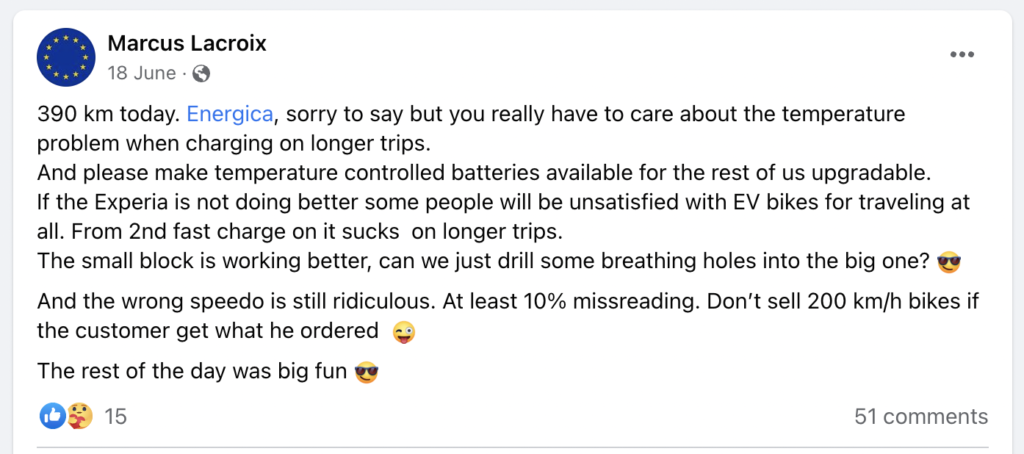
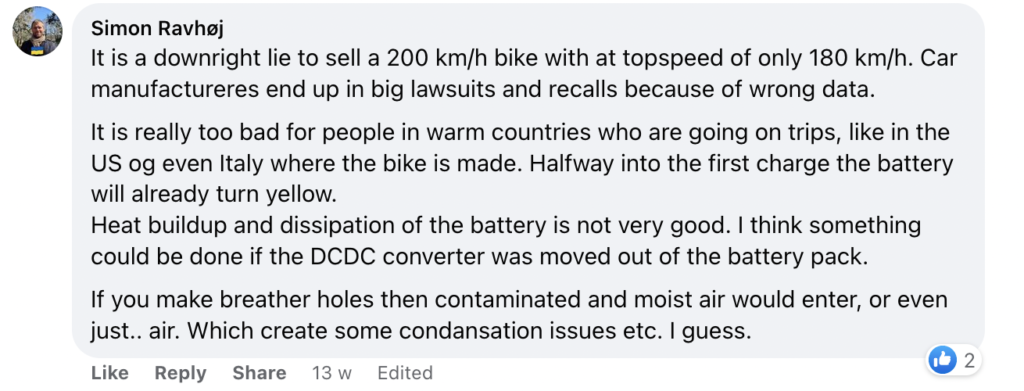


Jérémie Noirot also did a test ride of the Energica Experia in August over a distance of 345 km and he published these details:
First charge:
- Added SOC: 43% (from 55% to 98%)
- Loaded capacity: 9,23kWh
- Duration : 36 min, it was at 80% after 15 min
Second charge:
- Added SOC: 65% (from 21% to 86%)
- Loaded capacity: 15kWh
- Duration : 46 min, it was at 80% after 38 min
So I took all details and put them into a table and estimated how long would the Zero DSR/X take to load the same capacity.
| Nom. kWh | Initial SOC | SOC | Added SOC | Added kWh | Time | Speed | |
| Charge 1 to 80% | 19.6 | 55% | 80% | 25% | 4.9 | 15 | 19.6 |
| Charge 1 | 19.6 | 55% | 98% | 43% | 8.4 | 36 | 14.0 |
| Charge 2 | 19.6 | 21% | 80% | 59% | 11.6 | 38 | 18.3 |
| 19.6 | 21% | 86% | 65% | 12.7 | 46 | 16.6 | |
| Zero DSR/X – 1 | 15.2 | 55% | 98% | 43% | 7.9 | 37 | 10.5 |
| Zero DSR/X – 2 | 15.2 | 21% | 86% | 65% | 11.9 | 47 | 12.6 |
You can see that the DSR/X would take the same time as the Experia to reach the same percentage, but you won’t achieve the same range since 17.3 kWh with the DSR/X will get you 190 km and 21 kW with the Experia will be close to 250 km (official number in mixed riding).
Adi recently did a “briskly driven tour” of 222 km with the Experia in the Swiss Alps. He started with 100% SOC from Lucerne, rode a few mountain passes (Grimsel, Furka,…) then arrived with 22% SOC. This means a range of over 280 km with one charge. And that with two people on the bike.
During his test ride of the Energica Experia over a distance of 137 km in Italy, Rick Flashman used only 37% of the battery with an average speed of 67 km/h. That would calculate to a massive range of 370 km. Rick suggests that a more agressive riding would bring to range closer to 260 to 290 km, which is matching the data from Adi.
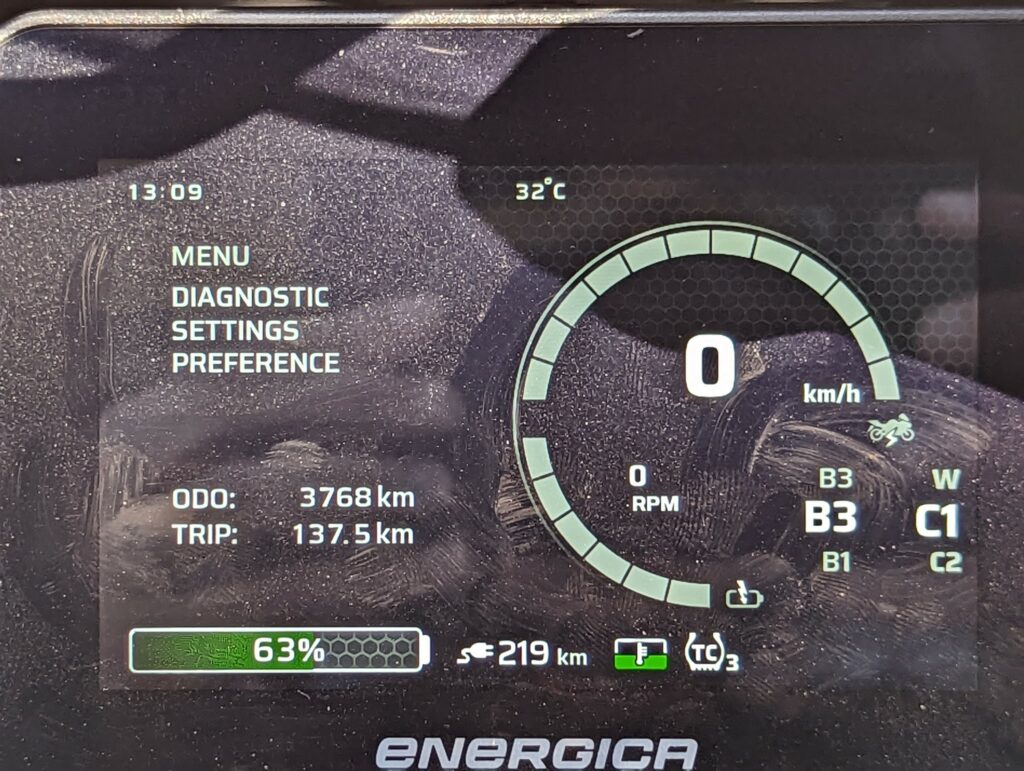
Then there is the recent independant review done by SportsBikeShop that claims a range of 100 to 110 miles (160 to 180 km) in mixed condition :
How do you translate this over a day of riding?
Let’s see how many times you need to charge per day, depending on the riding distance (I don’t count the last charge of the day and use official data to define the charging interval):
| Charging interval | 200 km | 400 km | 600 km | |
| Energica Experia | 230 km | 0x | 1x | 2x |
| Zero DSR/X | 170 km | 1x | 2x | 4x |
If you can find an AC charger every 170 km and a CSS charger every 230 km, you will save 1 to 2 charges per day with the Energica Experia vs the Zero DSR/X, which is about 1h00 to 2h00 saved, per day.
When calculating with ABRP a road trip from Berlin to Nordkapp it makes a difference of 14 hours over 2600 km and riding 400 km/day, it’s 2 hours per day on such a trip:
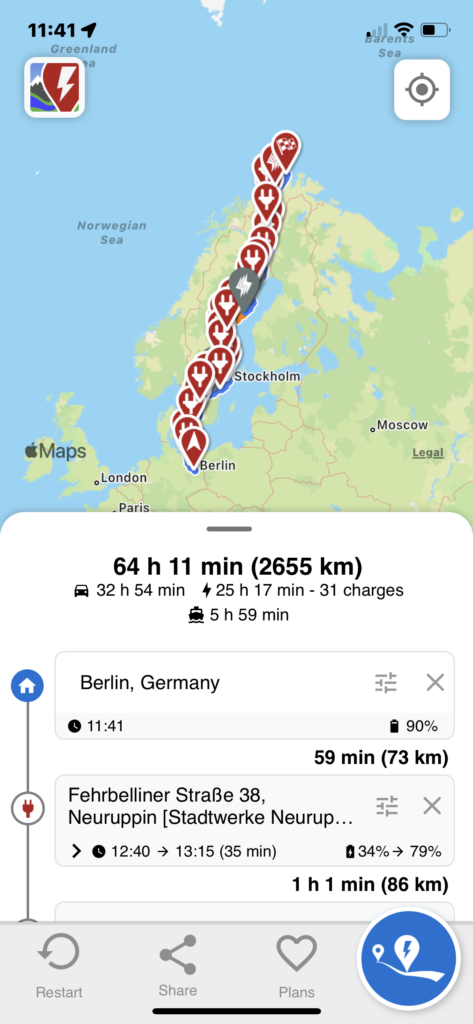
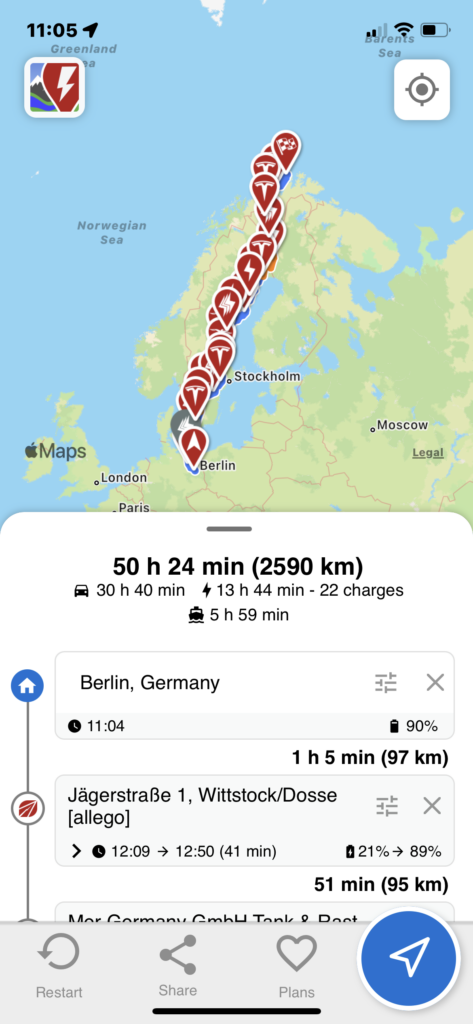
NOTE: I took the Energica SS9+ in ABRP since the Experia is not yet listed, so the result would be even better than the above with the Experia.
But you need to consider that there are about 50% less CCS charging points and that CCS is about 50% more expensive than AC.
Less charging points means that you may need to charge more often to be safe, or should take a different road, even on 2-day trip like my recent road trip in the Swiss Alps.
After checking the CCS network in Europe, I also know that I would not have been able to make the same trip during my 16-day trip in the Balkans :
In Europe and in the United States, CCS charge points are also very often on the highway. Energica riders can use the Tesla Superchargers opened to non-Tesla – also located near the highway – but as reported by users, it doesn’t work with V3 superchargers, only with V2 superchargers.
And while preparing another road trip to Morocco, I saw that the CCS would keep me north and on the highway rather than allowing me to go in the back country.
Of course, those who only to use their motorcycle to to commute can ignore this example.
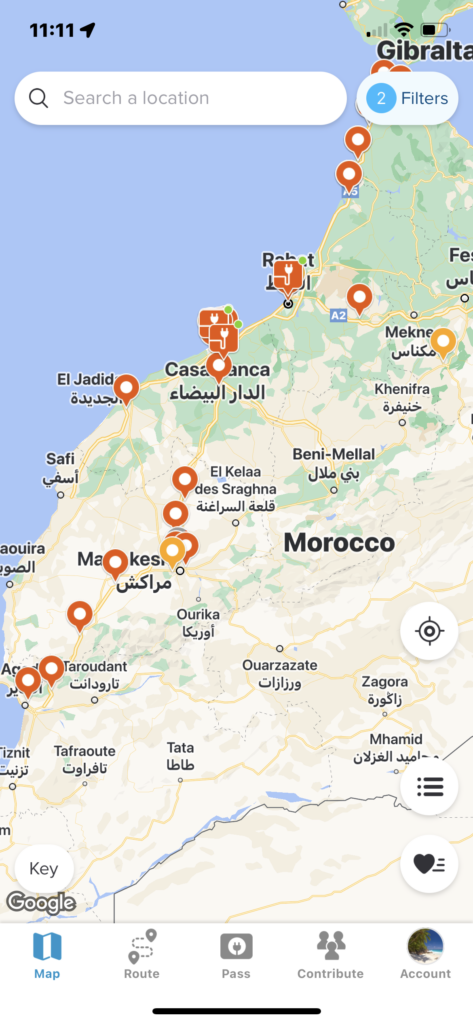
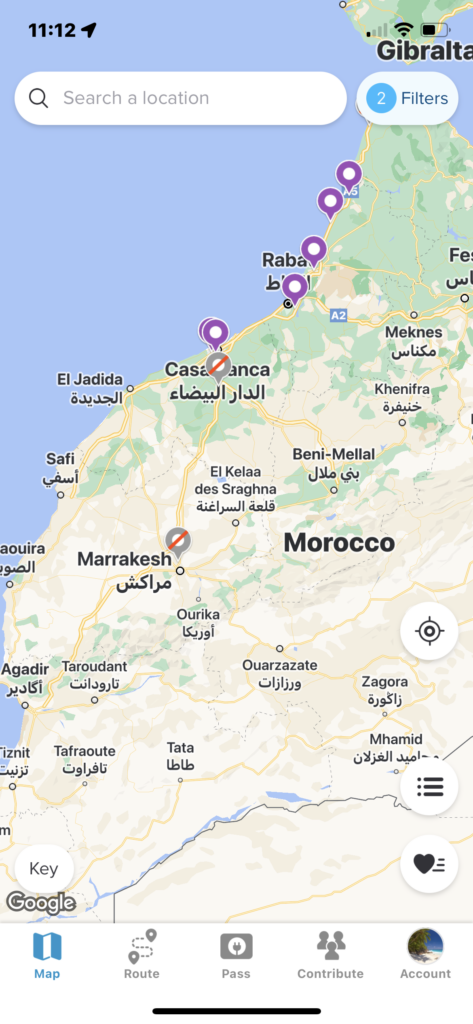
Another thing to consider is that the Energica Experia has 3 kW AC charging only.
On many occasions I planned to do the last charge of the day at the hotel or at a friend’s place, so I used a 22-kW Charger or Tesla destination charger and was able to take the bike for a local ride after 30 minutes. With the Experia it would take 2 hours (4x) to get enough juice.
I also know that I’m more likely to find an AC rather than a CCS charger: while riding the Dolomites with the Zero SR/F, I had to ask an hotel in Cortina d’Ampezzo to use their Tesla charger because all the other charge points were either broken or taken.
In the end, it’s hard to conclude on this point since it really depends on how and WHERE you intend to use the bike and I’m still debating with myself wether CCS is better or not for me.
Belt vs Chain and Maintenance
I much prefer the silence of the belt over the noise of the chain on the Experia and this the main reason that kept me from buying an Energica so far, added to the CCS debate.
Technically it’s not the chain itself that does this annoying noise on the Energica, but it’s related to it.
Interestingly, Zero added a chain kit as an option for the Zero DSR/X:
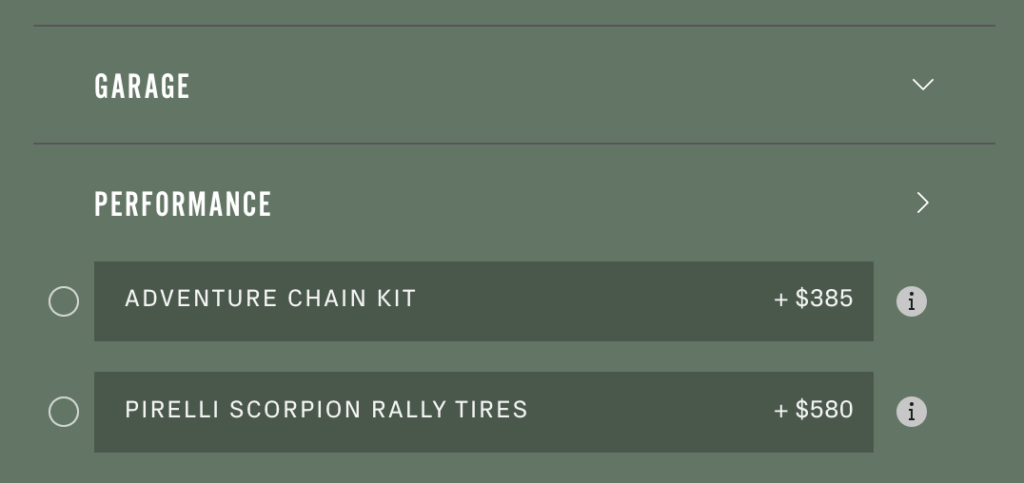
I would certainly consider this kit for a long trip, then put back the belt once I’m back home.
Energica does not offer a belt kit on the Experia!
Having a chain also means more maintenance, added to the fact that Energica use liquid to cool down the motor.
Price = Pain
Then comes the price of the Zero DSR/X vs the Energica Experia.
The price of the Experia is super simple, like their other motorcycles they tend to include most options, while Zero offer a lower entry prices with “add-ons”.
And looking at the 2023 models, Zero have added many accessories to their catalogue, especially for the DSR/X.
That means that to compare the price of a fully loaded Experia, you must add a couple of accessories to the Zero DSR/X. This is – of course – IF you need a fully loaded bike.
I’ll take EURO and France as a reference:
The Zero DSR/X with all equipments included on the Experia would currently cost you an extra 1,734 EUR:
(according to an Energica dealer, the luggages are offered for free on the launch version of the Experia, they will be charged as an option later)
| Experia | Zero DSR/X (EUR) | |
| Base price | 30,600 | 26,775 |
| Rapid Charger 6 kW | 3,000 | |
| Chain Kit | 495 | |
| LED turn signal | 139 | |
| Top box and mount kit | 590 | |
| Side case mounts | 350 | |
| Side cases | 985 | |
| TOTAL | 30,600 | 32,334 |
But I don’t need all these options, so here is my config:
| Experia | Zero DSR/X (EUR) | |
| Base price | 30,600 | 26,775 |
| Rapid Charger 6 kW | 3,000 | |
| Chain Kit | ||
| LED turn signal | ||
| Top box and mount kit | 590 | |
| Side case mounts | ||
| Side cases | ||
| TOTAL | 30,600 | 30,365 |
Now the difference is down to 235 EUR in favour of the DSR/X.
The config is a personal choice, but Zero has a cheaper entry price and lets you upgrade as you wish while Energica has a steeper price tag. Then you also need to consider this:
- The Zero has less maintenance than the Energica (no cooling liquid. no chain) and I value my time
- The price per kWh is about 50% cheaper with AC vs CCS
- Zero and Energica cover the bike for 2 years, while Zero covers the battery for 5 years / Unlimited mileage, and Energica only 3 years / 50,000 km
NOTE: I had initially stated that it’s easier to resell a Zero than an Energica, but this is harder to assess, also since these new bikes may attract different types of buyers and have different issues while production is ramping up, it can work both ways. I still think that better marketing (Zero), longer warranty and wider market makes it easier to re-sell a bike, but I leave it to the reader to decide on this.
Accessories
The other difference is that it’s easier to find accessories for a Zero than an Energica.
Energica never offered a Top case option on their other bikes for example, while Zero accessories are easier to find. Simply check these links to see the difference:
- AF1Racing – 2019-2022 SR/F Accessories
- AF1Racing – Energica Parts & Accessories
- NYA Parts – Zero
- NYA Parts – Energica
Energica includes the luggages with the launch edition of the Experia, which is a nice addition.
For the DSR/X, Zero Motorcycles display directly on the page a long list of accessories you can buy now or later:
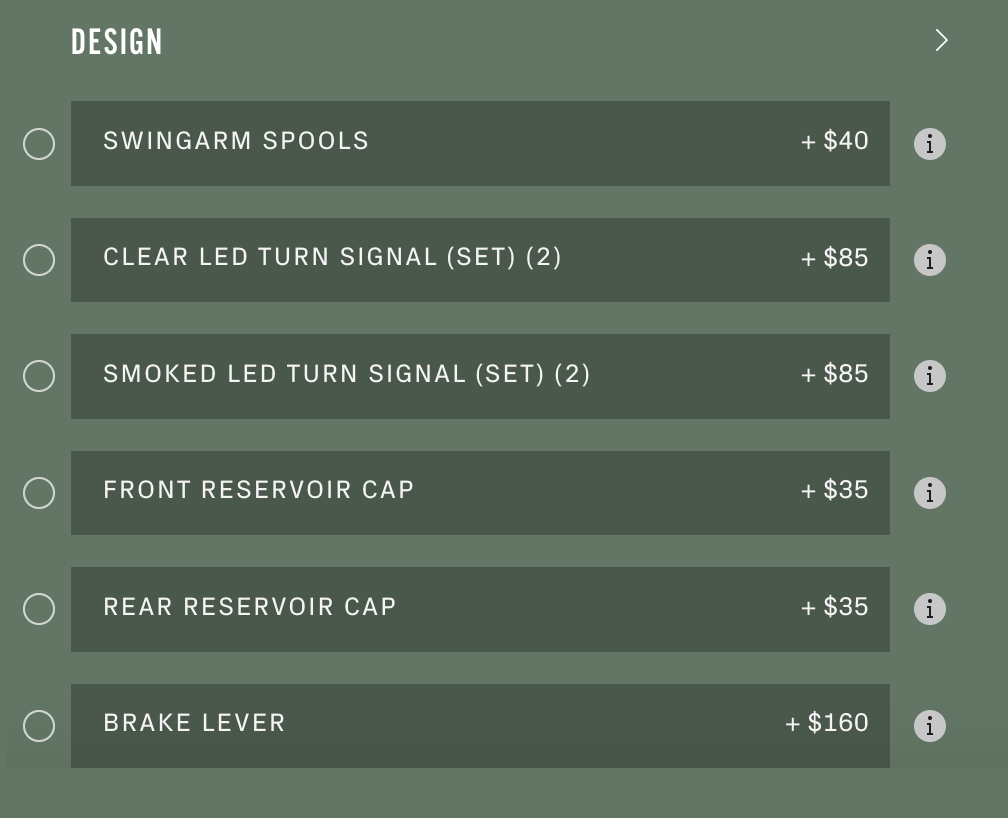
To be fair, I would not buy most of them upfront, and possibly some of them later, as my budget or needs increase.
Zero DSR/X test ride
I’ve recently test the Zero DSR/X, this is a feature and comfort review:
CONCLUSION: Is the Zero DSR/X better than the Energica Experia?
To summarize the above, I’ve considered the following factors to make my comparison and selected the winner for each item:
| Experia | DSR/X | |
| Range | x | |
| Charging speed | x | |
| AC vs CCS network | x | |
| kWh price | x | |
| Belt vs Chain & Maintenance | x | |
| Price & Warranty | x | |
| Accessories | x |
Overall the advantage of the Energica is the range while the Zero DSR/X is on par or better than the Experia on everything else.
The Zero DSR/X has slower charging speed but it has access to a better and cheaper AC network and includes a longer battery warranty.
Then I could compare the riding experience (after test riding the DSR/X), the style, seat height (DSR/X: 805 mm to 865 mm vs Experia: 847mm), and equipments, but to me they look similar and it’s also a question of taste.
I also didn’t consider off-road capabilities, where the Zero DSR/X appears as a clear winner compared to the Energica Experia.
Should I consider strictly the range, I would go for the Energica Experia, shoud I favour comfort and convenience I would go for the Zero DSR/X.

a little thing you might have forgotten….. changing LED turn lights on a Zero GEN3 bike you have to visit the dealer…. drive, time, charge, expenses
instead of having a menu onboard to change turn light options
Thanks, since I never changed the light on my SR/F I didn’t focus on this one, but yes, it can be important for those willing to upgrade
Thank you for the test.
Thanks so much for this detailed comparison, really valuable
Energica offers a extended battery warranty to 5 years for 1303 €.
I bought it for my EsseEsse 9+ RS. Just in case… 😉